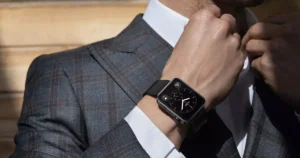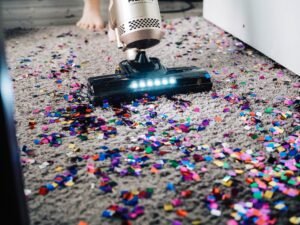
This is the comparison between the Nikon D7500 and Canon D80, both are in someway the kind of professional camera. Both are coming under some same features but also with some special and different features. Check out which be the best option for you.
Nikon D7500 |
Vs |
Canon D80 |
| CMOS Sensor | Sensor | CMOS Sensor |
| Wifi, HDMI | Connectivity | Wifi, HDMI |
| Rechargeable, Li-ion Battery | Battery | Rechargeable, Li-ion Battery |
| 20.9 MP Resolution | Resolution | 24.2 MP Resolution |
| SD, SDHC, SDXC | Memory Card Type | Eye-Fi, SD, SDHC, SDXC |
| Yes, Type 802.11 b/g, v 4.1 | Wifi | Yes, Type 802.11 b/g/n |
| Yes | Bluetooth | No |
| 640 Gram | Weight | 650 Gram |
| Yes | Touchscreen | Yes |
| LCD | Display Type | LCD |
Introduction
Nikon D7500
The quality of the camera is amazing, it feels like it’s built like a tank and it’s a little bit smaller and lighter than before but not by much. Overall, it’s just a good piece of hardware and it seems ready to take for anything from vacations up to even shooting sports and event photography kind of.
Canon D80
The Canon 80D is a camera that fits in all of those good deal categories often because it’s definitely been around for a little while but there’s also tons of stuff for a Canon, means Canon is like the iPhone of cameras. I mean there’s tons of accessories, everybody makes something for a Canon camera It’s a cheaper camera but it’s not a cheap camera, it’s still relatively expensive. The camera itself is still a fantastic camera, it takes beautiful photos, it’s extremely fast and auto-focus is great.

Design & Handling
Nikon D7500
One of those big missing features is that lack of those dual memory card slots. This is something that almost every professional photographer is gonna need in their camera as well as just about anyone else it’s a great feature to have and it’s something that was pulled.
One big new feature is going to be the articulating touch screen and for the most part it’s really nice. It’s 3.2 inches, it’s going to give you upwards, a little bit more limited on the downward mobility than some of your flip-outs screens but overall it’s really nice. The new touch screen also gives you access to some of the menu settings which is kind of not something that we always get, so much better touchscreen implementation on this camera.
The only negative that I really have on hardware design is going to be the module. It’s very difficult to change with one hand, it’s a very limited area that you have to press to unlock and then slide this around. It’s very difficult for me to access. Then, the only other little things is that the auto-focus mechanism to control that takes just a little bit more attention than I would like when I’m operating the camera.
In the hand it feels very good, it’s nice and balanced, it’s got deeper hand grip which is very nice. The camera stays very nicely balanced in hand. We have a nicer grip, it’s really easy to handle for a long period of time. If you’re somebody’s gonna be taking this out to some events or shooting some sports type stuff with it, it’s a very comfortable camera to hold and overall the ergonomics are great.
The disadvantage of this camera is the lack of a vertical grip or a battery grip. The previous generation cameras like the D7100 and the D7200 had vertical grips which definitely which gives you more power to work with for a longer period of time and it also improved the balance of the camera. When you look at the bottom of the camera I can’t see any electronic contacts here which means Nikon is not even planning for a vertical grip for 7500 which I think they should have.
The 80D has a pop-up flash which is great for those of you that just want a really versatile camera on higher end cameras, they take that away and for good purpose, there are flash attachments that you can get to go right into the hot shoe. That are gonna do a much better job than the pop-up flash.
Canon D80
The 80D has a touchscreen just like the 70D that is especially useful when it comes to recording video. The quick access button on the screen makes it easy and fast to reach all important settings like white balance, aperture, ISO, focus mode and audio control. Even though the camera doesn’t have an electronic viewfinder simply because it’s a DSLR, the moveable monitor is so bright that even in bright sunlight it’s easy to see everything and to judge the exposure correctly.
The menu is not too large which makes it easier to find the setting that one is looking for. The module can be locked to make sure the camera stays in the wanted mode. The battery life is quite good both in video and photo mode.

Image Quality
Nikon D7500
The Nikon D7500 actually has fewer pixels than the 24 megapixel in D7200 that we had before. So, now we have a 20 megapixel sensor from the D7500 but don’t let that fool you. This thing has amazing dynamic range, great low-light performance, and although it’s lower resolution it will likely give you better results than just about every other camera. The D7500 is gonna be one of the best quality aps-c cameras on the market today.
We do have a new processor and that’s going to help you get something like 8 frames per second, raw shooting up to 50 shots which is actually really quick for a camera like this. It is about two frames more than what the 7200 can shoot. It’s also gonna give you 4K time lapse and digital image stabilization. We have a brand new metering system. Someone who shoots auto ISO or aperture priority a lot, it’s a great new metering system that you’re going to have available.
This camera also uses a latest generation processor the Exspeed 5 which is also is in use in the D500 and the FX flagship the D5. It doesn’t offer uncompressed RAW, it offers only compressed RAW but lossless compression.
Canon D80
The canon EOS 80D is a DSLR with a 24.2 megapixel aps-c sensor. The camera can shoot video with up to 60 frames per second in Full HD and can take photos with a resolution up to 6000 by 4000 pixels. Even though the 80D doesn’t record 4K video and also doesn’t have a flat lock picture profile, the film mode has been improved. Compared to its predecessor, the EOS 70D, the 80D has a cleaner and sharper image. It’s not a huge difference but it’s visible.
Compared to other cameras on the market, the lack of a really flat picture profile can be an issue especially in contrast environments. Most of the time the dual pixel AF does a great job but the performance mainly depends on how good the lens AF is. The ISO performance is not great but better compared to the 70D. To shoot high resolution photo time lapses, an external intervalometer has to be used. The advantage of the internal time lapse mode is that no complicated post-production is necessary.
It is not a full-frame camera, it’s a crop sensor camera and basically what that means is that the sensor is not a 35 millimeter. The 80D has a three to ten times digital zoom but the image is kind of noisy and blurry. The photo quality is very impressive and compared to the video mode doesn’t lack dynamic range. The pictures can be heavily edited and post without seeing much noise. Compared to the video mode, there is nothing to complain about in photo mode.

Auto Focus
Nikon D7500
Now, while we do have the same auto-focus system from the Nikon d7200. It is a very good system and has plenty of coverage but with only 15 cross-type points, it just really doesn’t give you the upper hand compared to the competition, It’s still very good though.
There are some issues Nikon has and we really need to address them. Nikon is still using a contrast only detection system for their auto-focus system and while it is improved slightly, it just doesn’t come close to what Canon doing with 80D and Sony’s doing with their 6500. So, I really need the system to improve before I’m able to really recommend it. It’s just not possible to get smooth auto-focus results both in live view or when you’re doing video, especially when you’re doing video on any moving objects. It’s good for your landscape shooters if you just wanted to pinpoint. Certain auto-focus points has good light but that’s about the only thing that you’re gonna be able to use with good results on that one.
Canon D80
Canon has always had really great auto-focus and the 80D is definitely really good at auto-focus, even in some of those lower light situations. Though this camera doesn’t perform as good as a 5D does in lower light situations and some of the other cameras that are out there on the market now, the 80D does a really decent job in lower light situations for photography.
The focus and especially the auto-focus system of this camera is probably the most impressive feature. The dual pixel CMOS AF was originally introduced with a 70D and has now been improved. The camera features 3 AF modes that can be used for example, to track a phase or focus on anything that is in the center of the image. The speed of focusing during video capture can be adjusted to make the focus pole fast or slow but this speed adjustment only works with Canon STM lenses. To make focus polling easier, the 80D also has the one-touch setting which is a very precise and easy way to focus on the right subject simply by tapping on the area on screen that should be in focus.

Video Quality
Nikon D7500
This camera can really stand out when it comes to video recording. This can record 4K which is fantastic news. Besides a 4K, it also offers you a full HDMI output which means you can actually tap an uncompressed, unspoiled unprocessed, video signal from here and record it out in 10 bit out to an external recorder which is fantastic news for the video shooters. I will definitely say, it is a fantastic video camera because it uses the same sensor as the D500, the same process as the D500 and also gives you full HDMI output.
Video on live view shooting is kind of a mixed bag for me I mean on one hand it makes canon look for sticking with 1080p while we have 4K recording on this one we have headphones, we have mic inputs and 4K output to external recorders and even a neutral profile inside of this thing. It just has a lot of video features and make it look really nice.
Also, while we do have 4K, it does come at the expense of an additional 1.5 X crop and so kind of as more in common with Micro Four Thirds cameras where cameras like the Sony 865 hundred actually able to over sample from that larger sensor gives us even more detail while still using the entire sensor. So, while this camera does have 4K, it does look pretty nice on a spec sheet. It just kind of left me wanting more when it came to actual video recording. However, the quality was good and it definitely throws Canon in the back of the pack and overall I would say that the the 4K recording is nice to have 1080p still works. It’s just the auto-focus system is kind of holding this thing back in live view and video shooting.
Canon D80
There is not much room to change the look of the video in post otherwise banding and noise will occur. The camera has two video file compressions, the lower IPB compression and the higher bitrate ALL I at which it is only possible to record 24 and 30 frames per second. While other cameras already had 60 frames per second and full HD for a while, Canon finally decided to put those extra frames into the 80D.
To be able to shoot 6 DP, the file format has to be changed to IPB except the lower bitrate, there is no change in sharpness or detail when shooting with 60 frames per second. Unfortunately, the camera still has a recording limit of 30 minutes. After that time, the 80D will stop recording. The 80D has a headphone jack the 3.5 millimeter audio input plus manual audio control and audio levels on screen while recording video which makes it easy to check the sound.
When shooting video up to ISO 3200, the image noise is acceptable depending on the light. At 12,800, the noise is very high which makes the footage unusable. When shooting in low-light and at night, the lack of a higher dynamic range is an issue, that certainly isn’t a problem when taking photos that the contrast in video mode is pretty high.
A nice feature is the time-lapse mode. Setting up the time-lapse is very simple, the interval and number of frames have to be set and the rest is done internally by the camera. Even though the number of frames has to be selected, the camera only saves a video file and not the single photos. The good news is that the video quality is sharp and detailed just like photos but the downside is that the video is only being saved in 1080p, the shortest interval is one second. Long exposure sequences can’t be captured because time lapses can only be shot in video mode in which 1/25th of a second is the slowest shutter speed.

Bluetooth or Wifi
Nikon D7500
The camera does use snapper. It uses Bluetooth and WiFi to be able to transfer your images. We don’t have NFC anymore and overall the process is a little bit slow and a little bit clunky, it doesn’t work perfectly. It’s not the best system out there for transferring but it works. It’s nice to see that we have most of those features on this camera.
Canon D80
Useful thing for photographers is the Wi-Fi function which makes it easier to transfer files to a phone or to a computer.

Conclusion
Nikon D7500
I would say, this could be your first serious camera. For all those people who cannot really afford a D500, this camera is in kind of touching distance in a very close proximity, to of the D 500. This can be for the D 500 shooters. This can be a very good second camera, this can be your standby camera. Also for the DSLR film makers, this is the camera to buy. This will be for the serious amateur who’s kind of progressing or graduating towards on his way to becoming a serious professional and any DSLR film maker and also for wildlife photographers.
The Nikon D7500 just really blows away something like the Canon 80D in just about every area except maybe auto-focus performance in Live View. So, that’s something you don’t need that much of, this is really a camera that should be on the top of your list and for good reason. However, without some of the features like the dual card slots and Nikon it’s not making a battery grip like they did with a D7200 for these cameras, it really keeps it from separating itself like the D7200 used to from those cameras.
Canon D80
While the Canon 80D will disappoint a lot of advanced filmmakers because it can’t record 4k and doesn’t have a flat picture style it still could be a good choice for hobby photographers and filmmakers who are just getting started or for everyone who doesn’t want to shoot completely manual. The autofocus certainly is one of the most impressive techniques and it’s nice to see that implemented in a mid-range DSLR.
The 80D is like a bulletproof camera and that’s one of the things that I think Canon has kind of been known for. It have been fantastic, strong, durable, resilient, able to work really hard and last a long time.





